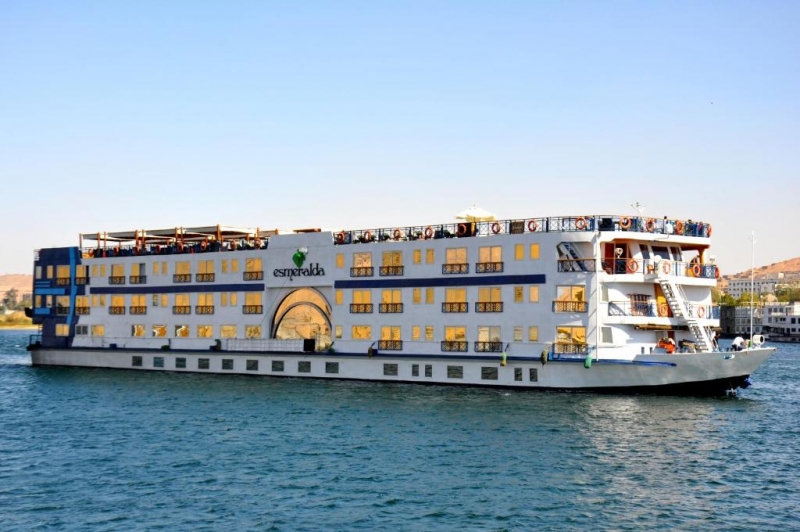
Cruise holidays in Egypt
Aswan Luxor Nile Cruise ,Many people are drawn to Egypt by the powerful Nile and its spectacular monuments, while others are awed by the alluring desert and verdant delta. It is a traveler's paradise when you take into account the nation's lengthy and enduring past and culture full of tales.
Best time to cruise the Nile?
My ideal time to go on a Nile cruise would be between March and April or October and November. The weather is dry and warm without being too hot. There also tend to be fewer visitors at these times, so the sites are quieter and more atmospheric.
Nile Cruise Holidays, Nile cruises have been transporting tourists between Luxor and Aswan for well over a century, making them historically the easiest method of travel in Egypt. As you leisurely meander along the river, you get a glimpse of the nation through the eyes of earlier travellers who, like us, came to marvel at the tombs and temples the Ancient Egyptians left behind.
The wonders of Egypt while cruising and the incomparable experiences
Cruise on the Nile The majority of ancient civilization monuments are located along rivers, allowing visitors to sail the Nile while learning about Egyptian history.
The Egypt luxury tour will give you the chance to explore Egypt like the Kings and Queens did thousands of years ago while travelling on the Nile.
The cruise will stop in many cities and sites. The city of Aswan is the perfect example as this southernmost city was the trade route between Africa and India where exotic goods were traded.
Another city rooted in Egyptian history is Luxor and the discovering of King Tutankhamen’s tomb has made it the perfect spot to deeply understand the rich history.
The cruise will make several cities and locations stops. Aswan serves as the ideal illustration because it is the southernmost city and served as an important trading hub for unusual products between Africa and India.
Luxor is another Egyptian-related city, and the discovery of King Tutankhamen's tomb has made it the ideal location to fully appreciate the country's extensive past.
The Luxor Museum is a wonderful institution that houses a carefully chosen, brilliantly displayed, and thoroughly explained collection of artefacts that primarily come from Theban temples and cemeteries and date from the end of the Old Kingdom up to the Mamluk period. Many people are put off by the expense of the admission, but don't let that deter you this is among the most rewarding attractions in Luxor and among the best museums in Egypt.
A well-preserved limestone relief of Tuthmosis III, an exquisitely carved greywacke statue of Tuthmosis III from the Temple of Karnak, an alabaster statue of Amenhotep III guarded by the great crocodile god Sobek, and one of the few pieces of Old Kingdom art discovered at Thebes—a relief of Unas-ankh—can all be found in the ground-floor gallery.
The two faceless Colossi of Memnon, which originally symbolised Pharaoh Amenhotep III and rise magnificently about 18 metres above the plain, are the first monuments visitors to the west bank witness. These colossal colossi, which each weighed 1000 tonnes and were carved from a single block of stone, were located at the eastern entrance to the Amenophis III funeral temple, which was the biggest structure on the west bank. Behind the colossi, Egyptologists may be seen digging the temple and making discoveries.
When the statues were attributed to Memnon, the fabled African king who was killed by Achilles during the Trojan War, the colossi were already a popular tourist destination during the Graeco-Roman era. The whistling sound made by the northern statue at sunrise was said to be Memnon's call to his mother Eos, the goddess of dawn, and was seen as lucky by the Greeks and Romans. She would shed dewy tears in retaliation for his premature passing. All of this was most likely caused by a crack that developed in the colossus' upper torso following the earthquake of 27 BC. Sand would break off and reverberate inside the gaps in the building as the heat of the early morning sun burned the dew-soaked stone.
- Amwaj Nile Cruise
- Radamis I Nile Cruise
- Nile Cruise Cairo to Aswan
- Oberoi Philae Nile Cruise
- Oberoi Zahra Nile Cruise
- Tosca Nile Cruise
- Princess Sarah Nile Cruise
- Princess Sarah 2 Nile Cruise
- Sonesta St. George Nile Cruise
- Mayfair Nile Cruise
- Movenpick Royal Lily Nile Cruise
Mobile : +2010014222529
+201033358596
E-mail : amir@egyptonlinetours.com
Web site: www.planegypttours.com


